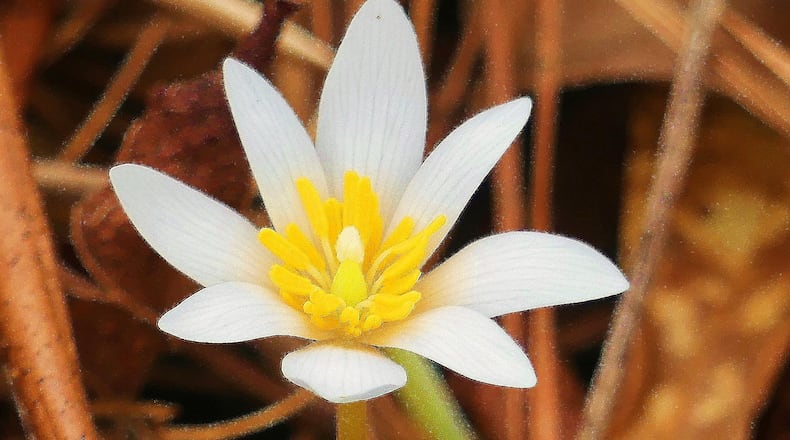Last weekend’s hard freeze — with temperatures in the low 20s and snow in the mountains — zapped early azalea blooms and other ornamental flowers in North Georgia. Some peach and blueberry orchards suffered cold damage in Middle Georgia.
But for one large group of early blooming plants, there was little concern about their making it through the bitter cold. They are Georgia’s spring ephemeral wildflowers, native plants that pop up from dormancy on the forest floor in early March and April and quickly complete their life cycles — before forest canopies leaf out and block the sun. Their early blooming takes advantage of the sun shining through the still-leafless trees and warming the soil.
They include trout lilies, bloodroot, toothwort, harbinger of spring, squirrel corn, blue cohosh, twinleaf, Virginia bluebell, Dutchman’s breeches, spring beauty, wood anemone, windflower, bleeding heart, bluets, some trilliums and others.
After short bloom times, they will make fruit, set seed and then die back to their underground parts by late May. They must, however, survive the fickle weather of March and early April — springlike one day and wintry the next, as was the case last weekend.
Unlike non-native plants such as peaches (which originated in China), native spring ephemerals “have adapted through evolutionary history to withstand the quickly shifting temperatures of late winter and early spring,” said Daniel Ballard, owner of Convivial Landscapes in Decatur.
For example, the bloodroot, which produces a showy white flower in early March, rises from the soil with a single thick leaf that envelops the flower bud and stem to trap heat and protect them from plunging temperatures. The yellow-flowered trout lily, which blooms in late February, and the pinkish-flowered Eastern spring beauty close their petals tight like an umbrella to protect against cold. Some ephemerals have furlike coatings that capture warm air near their surfaces, creating a micro climate.
Over the next several weeks, you can see many of these remarkable flowers along woodland trails throughout Georgia, including the Shirley Miller Wildflower Trail in Walker County.
IN THE SKY: From David Dundee, Tellus Science Museum astronomer: The moon, which turned full on Friday, will still appear full this weekend. Venus, Mars and Saturn are in the east just before sunrise.
Charles Seabrook can be reached at charles.seabrook@yahoo.com.
About the Author
Keep Reading
The Latest
Featured


